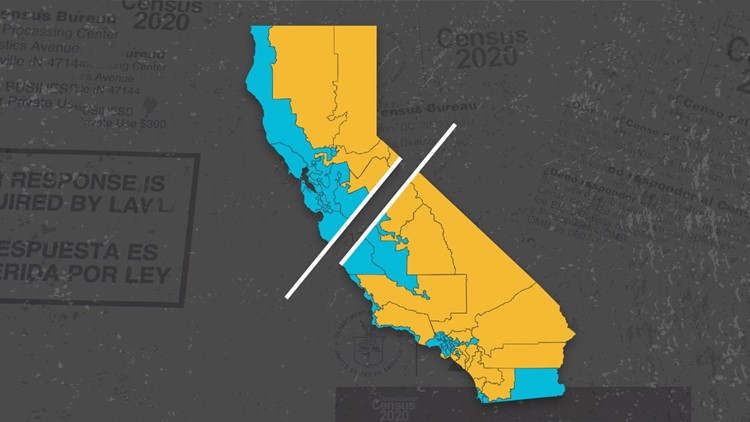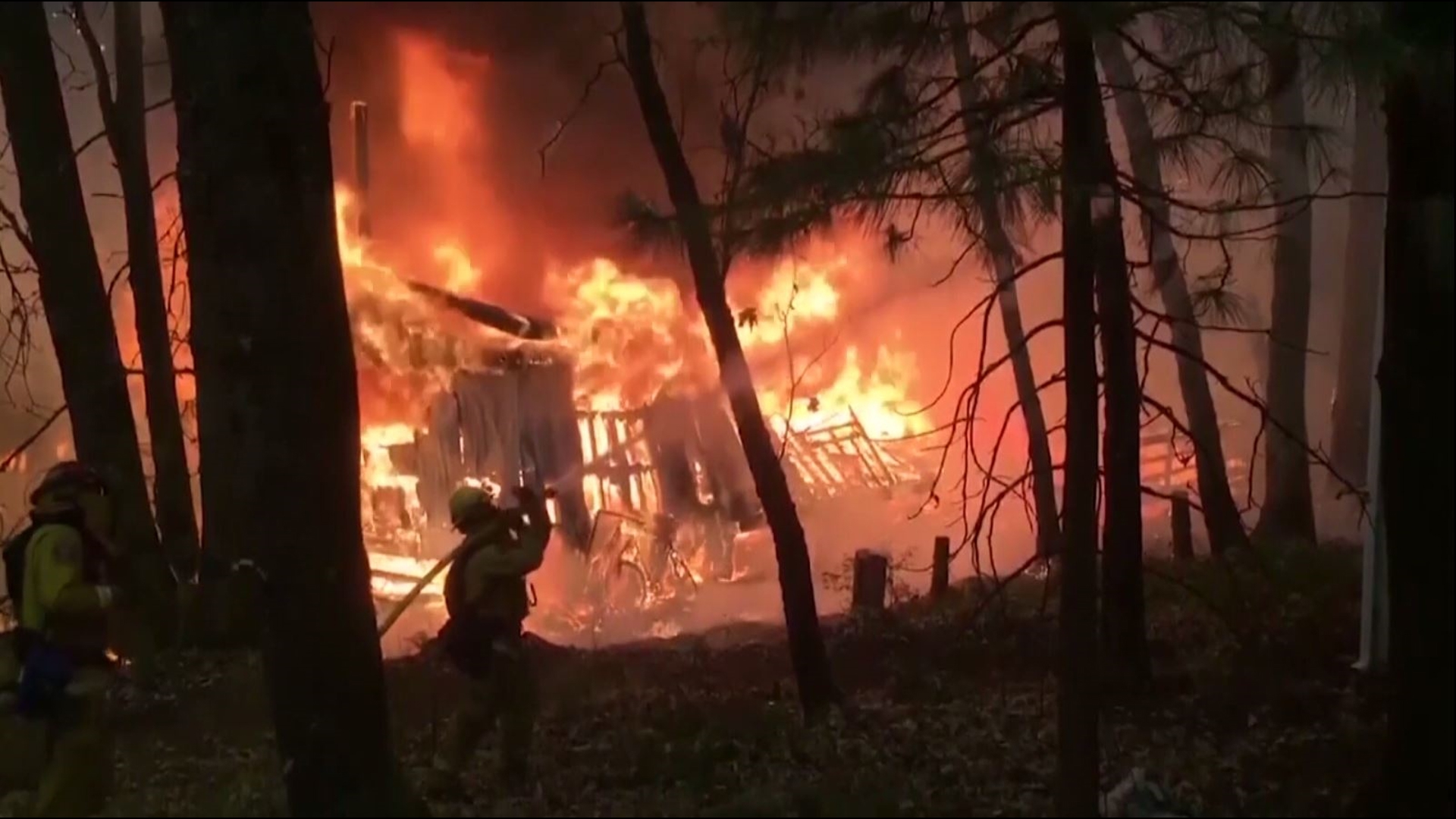CALIFORNIA, USA — This story was originally published by CalMatters.
Some describe redistricting as a giant puzzle; others call it the world’s most difficult art project.
Another way to think of the redrawing of the electoral maps after every Census: The middle piece between the once-a-decade population count and our elections.
California’s independent redistricting commission is in its second week of looking at possible scenarios for redrawing lines based on how the state’s population has shifted, responding to public input it has received, while trying to keep an equal number of people in each district — 52 for Congress, 80 for state Assembly and 40 for state Senate.
The commission has until Nov. 15 to release its preliminary maps, but plans to do so Nov. 10. It will then hear and consider more public comment before finalizing new districts by late December, in time to use them for the 2022 elections.
How those maps are drawn will shape not just who is elected, but also how voters and communities throughout California are able to band together and advocate for their needs.
Here’s what you need to know about the process:
What is redistricting and why do we do it?
Every 10 years, after the federal government completes the census and releases the updated population count, California must redraw the boundaries of its congressional, legislative and state Board of Equalization districts, so that the districts correctly reflect the current populations. So must cities and counties that elect officials from districts.
But there’s a long history across the nation and in California of politicians drawing districts to favor one party or to protect incumbents — instead of prioritizing equal and fair representation.
Why does it matter?
Redistricting is about the power at the ballot box and representation in a democracy.
“At the end of the day, it’s about the fundamental question of who gets to vote with whom,” said Julia Marks, head of the voting rights program at Advancing Justice-Asian Law Caucus. “So if your community has a set of concerns and preferences and issues that really speak to your community, and other folks who live nearby or in the city next door share those concerns, you want to be in a district together, because that means you can vote together.”
That voting power also helps communities organize between elections, including which representatives to lobby, and how to advocate on issues that affect daily life.
Who’s in charge?
California is one of eight states with an independent commission. It was created by voters in 2008 when they passed a ballot measure to take redistricting power away from the Legislature for state Assembly and Senate districts. In 2010, voters added congressional redistricting to the commission’s duties.
This is the second time the statewide commission is drawing districts, but its 14 members are all new: five Republicans, five Democrats, and four not affiliated with either party. They include professors, community leaders and businesspeople.
According to the state constitution, the first eight commissioners are selected by a panel of three independent officials from the state auditor’s office. That panel narrows down applications to 120 — 40 Democrats, 40 Republicans and 40 registered with no party preference — and then down to 60 applicants, 20 from each subpool. Then, the Legislature gets to remove as many as 24 names from the list (eight from each subpool). Finally, the auditor randomly draws eight names. These first eight commissioners then select the final six members by selecting two from each subpool.
What is the timeline?
The current California redistricting commission was seated in August 2020, but began the first phase of its work educating the public about the redrawing process in February.
In 2011, the Census Bureau released the data needed to draw maps in March, giving the commission about seven months to complete its work. But this year, the data wasn’t released until September due to delays caused by the COVID-19 pandemic and interference by the Trump administration.
That allows the commission only about three months to give direction to its demographers, collect public input and submit its final maps to the Secretary of State’s office by Dec. 27. The commission sued to extend its deadline, but a judge denied the request, in order to keep the June 2022 primaries on track.
The commission plans to release preliminary maps as soon as Wednesday, then start a series of public input meetings on Nov. 17. It has already put out two rounds of early draft “visualizations” that are drawing some criticism from advocacy groups and partisans. A few scenarios would put incumbents in the same district.
What are the rules the commission must follow?
There are six criteria that the new districts must meet, ranked in the following order:
1. Equal population: Each district must have approximately the same number of people
2. Compliance with the Voting Rights Act: Minority groups must have an equal opportunity to elect representatives of their choice.
3. Geographically contiguous: All parts of a district must be connected to each other.
4. Communities of Interest: As much as possible, districts must not split cities, counties, neighborhoods or “communities of interest” that share social and economic interests.
5. Geographically compact: Districts must include the closest populations, not bypass them for others who are further away.
6. Nesting districts: Wherever possible, each Senate district should be made up of two complete, adjacent Assembly Districts; Board of Equalization districts should be composed of 10 complete and adjacent State Senate districts.
What about diversity?
The commission isn’t required to draw districts that guarantee ethnically diverse elected officials, but it’s one measure by which some evaluate its work.
Between 2012 and 2020, the commission’s new districts largely succeeded in helping to add elected officials of color in California, according to a study by the USC Schwarzenegger Institute. But on diversity, there’s a ways to go. Statewide, Latinos make up 30% of the voting age population, but are a majority in just 19% of the 173 congressional and legislative districts, according to an analysis by the Public Policy Institute of California.
What is gerrymandering?
Gerrymandering is when district boundaries are manipulated for a particular political outcome. There are typically two ways this is done:
- Packing: concentrating blocs of voters to limit their power to as few districts as possible.
- Cracking: spreading like-minded voters among several districts so that their influence is diluted.
How are the final maps decided?
After agreeing on the geographic boundaries of the districts, the commission votes on each of the four maps.
For final approval, a map must get a “yes” vote from at least nine of the 14 commissioners: three Democrats, three Republicans and three with no party affiliation. If no map gets the nine votes, commissioners must keep debating until they reach the minimum vote count.
The approved maps are submitted to the Secretary of State with a report explaining how the commission made its decisions.
How do I participate?
One of the commission’s primary tasks is to collect public input and consider it in drawing the new districts. There are a few ways to get involved:
- Draw your own map: This year, there is a tool that anyone can use to create a map to share.
- Submit a comment: The commission has a public input form on its website, where you can submit your comments and attachments, including a map, if you created one. These comments are uploaded to a publicly viewable database.
- Call in: Any individual or organization can call in during the public comment period of commission meetings as long as the caller queue is open.
- Join groups: Throughout the state, a number of advocacy groups have organized to inform the public and to collect input on community priorities to present to the commission. Some of these groups have formed regional coalitions to cooperate on map proposals.
What’s different this year?
In the past decade, California saw slower population growth, though the pandemic and the threat of a citizenship question likely led to an undercount. Still, that means the state will lose a congressional seat for the first time ever; experts say it’s likely to be in Los Angeles County. That probably will have ripple effects on congressional boundaries throughout the state.
It’s also the first California redistricting under the Fair MAPS Act, which lays out parameters for independent commissions at the local level, not just statewide. Some organizers say that gives residents more say, plus legal tools to hold local officials accountable for the new maps.
What about local redistricting commissions?
Cities and counties are allowed to have independent commissions under the Fair MAPS Act, but it’s not a requirement. There are about 20 at work this year. In January 2020, Gov. Gavin Newsom vetoed a bill that would have required counties with more than 400,000 residents to set up independent redistricting commissions.
Whether it’s city council members or county supervisors or an independent commission in charge, state law requires them to do public outreach to encourage residents to take part, and hold meetings with public input.
Like the state commission, they must also draw the maps according to the ranked criteria. But that doesn’t always happen.
In 2018, the Mexican American Legal Defense and Educational Fund won a lawsuit against Kern County over its 2011 redistricting plan for diluting the Latino vote and denying Latinos the opportunity to elect representatives of their choice.
Where can I learn more about redistricting?
- The California Redistricting Commission website has resources under its outreach section
- The Public Policy Institute of California is tracking redistricting in various reports.
- Common Cause California is following local redistricting.
- FiveThirtyEight has a national guide to What Redistricting Looks Like In Every State



